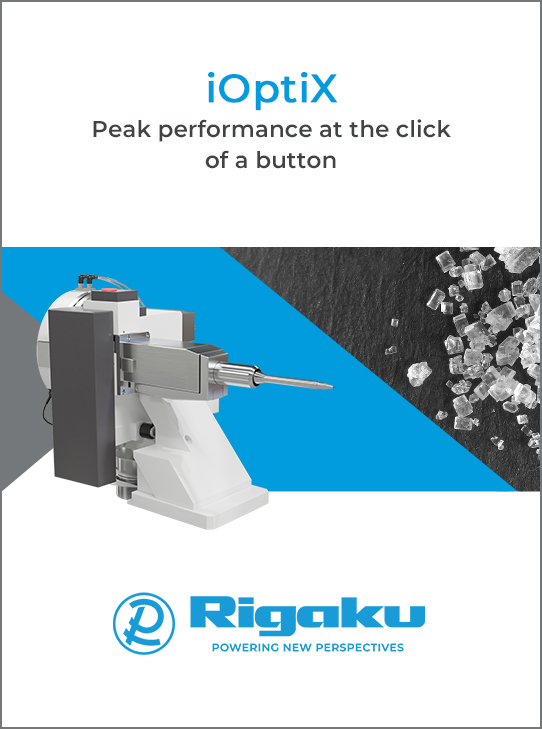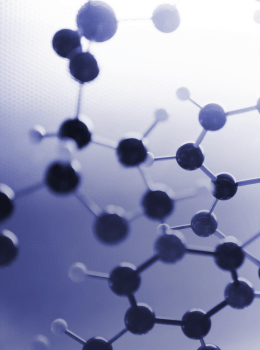


IUCr Congress
The long road to Melbourne, Australia – the 2023 IUCr Congress
![Thumbnail [Thumbnail]](https://www.iucr.org/__data/assets/image/0017/157130/Thumbnail.jpg)
The Melbourne skyline by night, overlooking the Yarra River, with part of the Melbourne Convention and Exhibition Centre on the bank to the right. (Photo credit: Chris Sumby.)
Six years after successfully bidding for the IUCr Congress, the Society of Crystallographers in Australia and New Zealand recently hosted the 26th Congress in Melbourne, Australia. The meeting was held in the Melbourne Convention and Exhibition Centre over seven and a half days between 22 and 29 August 2023, attracting nearly 1800 participants (including 402 early-career researchers) from 66 countries. The path to Melbourne was a long one in many ways, in part for the organisers who had to deal with several uncertainties during the organisation, and for many of the participants who had to make their way to Melbourne from places as far away and as diverse as Albania and Venezuela.
Australia was the host to the IUCr Congress for the second time. The first instance was the 1987 IUCr Congress held in Perth in Western Australia, a meeting that left a significant legacy in Australia regarding crystallography. For the 2023 event, the organisers did a fantastic job of promoting Australia and the meeting via Twitter, the IUCr Newsletter and E-Zines, promising the opportunity to experience a meeting that showcased Melbourne’s culture and Australia’s unique landscapes, and highlighted the vibrant local scientific community that has made remarkable contributions to crystallography. In addition to showcasing Australian and New Zealand science, the meeting was also to serve as a meeting point for the world’s crystallographic community, who hadn’t been able to meet in person as one since 2017 (noting the mostly virtual 25th IUCr Congress in Prague in 2021), and to allow attendees from various countries to gather to exchange knowledge, foster collaboration and celebrate the recent breakthroughs in the field of crystallography.
![[Fig. 1]](https://www.iucr.org/__data/assets/image/0018/157131/Fig.-1.jpg)
Two days of Pre-Congress Workshops kicked off on Monday 21 August 2023, with workshops covering topics ranging from “Next-generation atomistic-level structural modelling…” to “CCP4/CCP-EM” and “Using the CSD to go from data to discoveries”. These comprehensive sessions brought together experts and newcomers alike to delve into the latest developments, technologies and methodologies in crystallography.
The Congress officially started on Tuesday afternoon with an inspiring opening session, headlined by the award of the 13th Ewald Prize to Professor Wayne Hendrickson who spoke on the refinement of crystal structures at ultralow resolution using approaches such as AlphaFold modelling. Delegates were welcomed to Melbourne by the Congress Chair, Professor Michael Parker, and indigenous performers from Australia and New Zealand. The opening session not only marked the commencement of the Congress but also celebrated the spirit of scientific exploration and collaboration that are hallmarks of the global crystallography community. The opening lecture was followed by the Congress Welcome Reception, which was held in the IUCr 2023 Exhibition Hall. Delegates were able to catch up with friends and colleagues; enjoy a drink, free-flowing oysters and cheese; and have the opportunity to “network” with some of Australia’s native animals.
![[Fig. 2]](https://www.iucr.org/__data/assets/image/0019/157132/Fig.-2.jpg)
The Congress got under way in earnest on Wednesday with up to 12 parallel sessions available throughout the meeting. In addition to the presentations of various awards and a medal, including the Ewald, Bragg and Struchkov Prizes as well as the Gjønnes Medal, there were three plenary lectures and 35 keynote lectures throughout the Congress. In addition to the award of the Ewald Prize to Professor Hendrickson, the Bragg and Struchkov Prizes were awarded to Professor Arkadiy Simonov [development of the three-dimensional difference pair distribution function (3D-∆PDF) approach] and Dr Robert Fayzullin (high-resolution X-ray diffraction crystal structure determination), respectively, and the Gjønnes Medal to Professor Jian-Min Zuo (contributions to the development and application of quantitative electron diffraction).
Although the Congress was in-person, most of the plenary and keynote lectures were recorded and made available online, making the Congress accessible to members of the world community who could not travel to Melbourne. These included the plenary lectures, with the first two given by Professor Hideo Hosono and Dr Junko Yano on Friday and Saturday nights, respectively. Throughout the meeting, there were 120 microsymposia representing all the Commissions of the IUCr. This provided all participants with an abundance of talks covering a wide spectrum of topics, ranging from fundamental crystallography principles to groundbreaking discoveries.
For the first four full days of the Congress, coffee breaks and lunches were held in the large IUCr Exhibition Hall amongst exhibition booths for the 42 sponsors and exhibitors of the meeting. These ranged from Rigaku Oxford Diffraction, having a networked MicroED instrument that participants could use to collect data on a pre-loaded sample, through to the Cambridge Crystallographic Data Centre (CCDC) running their CSD Leaderboard. The food was plentiful and easily accessed at the fully catered lunches, and a healthy mix of fruit was provided throughout the meeting. The large poster sessions were spread throughout the Exhibition and adjacent to the rooms used for the concurrent sessions.
In addition to the scientific program, three sessions of the General Assembly of the IUCr were held to transact the business of the IUCr as the organisation reached its 75th anniversary. Among a range of decisions made was the official recognition of the African Crystallographic Association (AfCA) as the fifth Regional Associate of the IUCr, the awarding of the 28th IUCr Congress to the German Crystallographic Association (Berlin, Germany, following the 27th Congress in Calgary, Canada), and the election of a new IUCr Executive Committee under the leadership of Professor Santiago García-Granda (University of Oviedo, Spain) as IUCr President.
Another highlight of the meeting was the excellent outreach opportunities associated with the Congress, including the Crystal-A-Con day on Friday 25 and Saturday 26 August. This event was spearheaded by Professor Stuart Batten and Dr Helen Maynard-Casely, and aimed to engage the broader community in the wonders of crystallography. Over 480 Bragg Your Pattern delegates were in attendance over both days. The event consisted of seven awesome activities (based around the seven crystal systems) to inspire the next generation of scientists and ignite a passion for crystallography in young minds, along with an exhibition of patterned artwork, crystallographic-themed fashion and some gigantic crystal structure models. The activities ranged from helping to build a giant diamond structure (cubic) through to meeting real-life crystallographers (triclinic). Some amazing local volunteers helped, with support from the CCDC, Protein Data Bank and the Australian Nuclear Science and Technology Organisation. On Saturday, Professor Jenny Martin gave a public lecture entitled “How I Fell in Love with Crystallography and why you should too,” which touched upon the history and practice of crystallography, crystallography-themed cakes and the discipline’s enormous impact on science and the world around us.
![[Fig. 3]](https://www.iucr.org/__data/assets/image/0020/157133/Fig.-3.jpg)
A particular personal highlight of the Crystal-A-Con activities was the building of a large model of diamond to break the record for the largest chemical model. Over many days preceding the event, the team (mostly at the Australian Synchrotron and including the control room staff) built components of the model, which were then pieced together and extended during the IUCr Exhibition and Crystal-A-Con event. After some stressful hours late on Saturday, when the team thought they were going to be ejected before the model was completed, the final layers were added, and a few defects were removed with minutes to spare. The final numbers, courtesy of Professor Batten, were 62,356 atoms + 121,547 bonds = 183,903 parts or 341 kg, with dimensions over the 24 layers being a bottom edge of 3.69 m, top edge of 2.31 m and height of 1.11 m.
To celebrate the 75th anniversary of the IUCr, a dedicated microsymposium, the IUCr 75th Anniversary, was held on the afternoon of the second to last day of the Congress. This touched upon topics ranging from the role and importance of the IUCr in international science, to what the various committees and instruments of the organisation do, through to opportunities for the future of the society. These latter points focussed on making sure everyone feels welcome in crystallography and looking to future applications of the science and technique. Reflective of some these ideals, the 26th IUCr Congress had childcare available throughout the entirety of the meeting and had 16 registered children in attendance.
The IUCr Congress dinner, themed as a “Night at the Museum” Congress Celebration Party, was held at the Melbourne Museum on Monday night. The Congress dinner was included into all registrations to make it inclusive. Guests were welcome to explore many parts of the Museum, seeing the exhibits and sampling food from Melbourne, Victoria and Australia. Some fantastic images of people mixing under dinosaur skeletons and being photographed with performers dressed as giraffes, geishas and Egyptian cats marked this a night to remember for all who attended. The dinner certainly provided an iconic location and allowed the attendees to unwind, share experiences and celebrate the meeting.
![[Fig. 4]](https://www.iucr.org/__data/assets/image/0003/157134/Fig.-4.jpg)
The next day after the dinner, delegates were back to hear from the third plenary speaker of the meeting, Professor Mark Spackman from the University of Western Australia, talking about “Molecules as Crystals”. This was the opening to another full day of scientific activity before the meeting close in the afternoon. The poster sessions, this time on the balcony areas outside the session rooms, were again in full swing on Monday and Tuesday as the second tranche of posters were on display; organised together in this way, it was apparent how many posters were being presented at the Congress. Late on Tuesday afternoon, the 26th IUCr Congress was closed by Professor Parker, bringing to an end a week (and a bit!) filled with scientific exploration and discussion. The closing session acknowledged the dedication and passion of the crystallography community, especially the Local Organising Committee and the International Program Committee, in bringing the meeting to fruition and looked ahead to future Congresses and continued success for the IUCr.
Christopher Sumby is Head of the School of Physics, Chemistry and Earth Sciences and Professor of Chemistry at the University of Adelaide, SA, Australia, and the Asia-Pacific Regional Editor of the IUCr Newsletter.
Copyright © - All Rights Reserved - International Union of Crystallography







